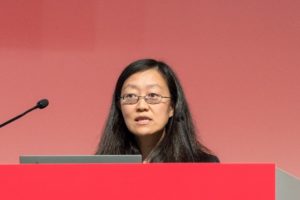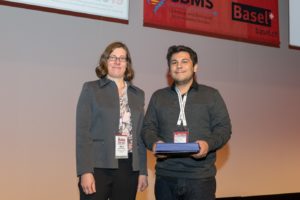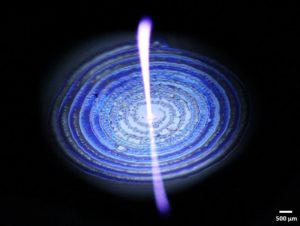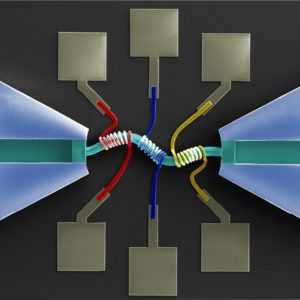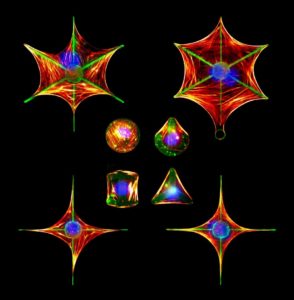The µTAS 2019 Conference was held from 27-31st October in Basel, Switzerland. Maria Southall, Deputy Editor of Lab on a Chip, attended the conference and announced the prestigious Lab on a Chip awards which include the Pioneers of Miniaturization Lectureship (in partnership with Dolomite Microfluidics), the Widmer Young Researcher Poster Prize and the Art in Science competition (in partnership with NIST). All three competitions received many fantastic submissions and we are delighted to present the winners, below:
Lab on a Chip/Dolomite “Pioneers of Miniaturization” Lectureship
Professor Hang Lu (Georgia Tech, USA) was awarded the 14th “Pioneers of Miniaturization” Lectureship, sponsored by Dolomite and Lab on a Chip. The “Pioneers of Miniaturization” Lectureship rewards early to mid-career scientists who have made extraordinary or outstanding contributions to the understanding or development of miniaturised systems. Professor Lu received a certificate, a monetary award and delivered a short lecture at the conference.
Art in Science Competition
Greg Cooksey from the National Institute of Standards & Technology (NIST) and Lab on a Chip Deputy Editor Maria Southall presented the Art in Science award to Joseph de Rutte from UCLA for his entry “A Cell’s World”. This award aims to highlight the aesthetic value in scientific illustrations while still conveying scientific merit.
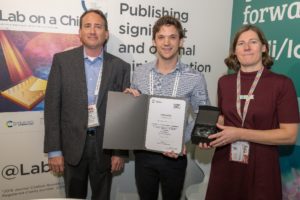
Left to right: Greg Cooksey (NIST), Joseph de Rutte (UCLA, winner) and Maria Southall (Lab on a Chip)

Winning image ‘A Cell’s World’: Fluorescent image of uniform droplets formed using structured microparticles. Fluorescently labeled particles are suspended in a water solution and agitated with oil and surfactant. This platform is used to encapsulate single-cells and measure their secretions.
Widmer Young Researcher Poster Prize
The Widmer Young Researcher Poster Prize was awarded to Roberto Rodriguez-Moncayo from the Centro de Investigación y de Estudios Avanzados del IPN, Mexico, for his poster on “Integrated microfluidic device for universal secretory immunophenotyping studies for adherent and non adherent cells”.
Congratulations to all the winners at the conference, we look forward to seeing you at µTAS 2020 in Palm Springs, California, USA!



